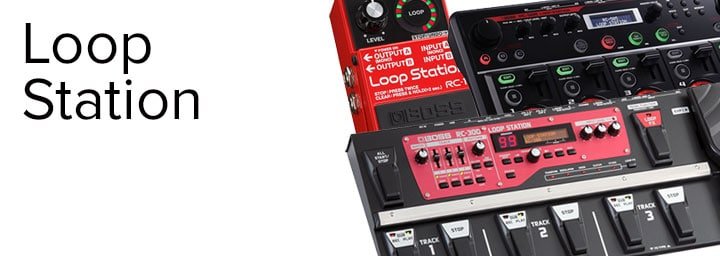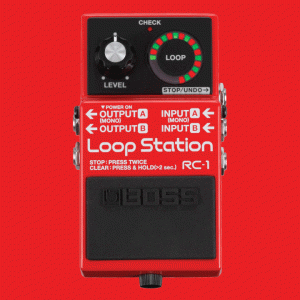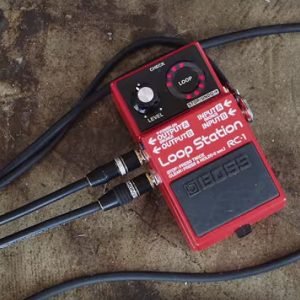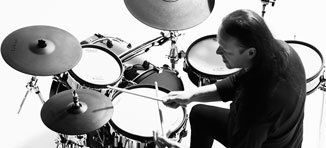Advanced Looping: As a musician, the art of looping is one of the most enjoyable things you can possibly do. Looping is something that truly allows you to tap into new areas and to expand your creativity.
Whether you’re in a solo, duo or ensemble situation, once you get a taste of the looping bug, it’s downright intoxicating and will lead you further down the rabbit’s hole of creative opportunity and expression.
Like any musical endeavour though, looping is an art form that takes time to perfect. Few looping artists were ever able to craft their looping masterpieces at first attempt. Using a looper takes a little skill, a lot of practice and a level of awareness that is not always immediately obvious when starting out.
In this article, we’ll aim to give you a few inside tips and hints that you can hopefully use to build your looping skill set, as well as brushing up on a few basics. Whether you’re completely new to the practice of looping or have been doing it for a while, we’re sure you’ll find one or two nuggets of inspiration to improve or refresh your looping technique. Let’s take a look!
Contributed by Byron Struck for the Roland Australia Blog
Know your looper
Thinking of your looper as an actual instrument like your guitar or synth. This automatically puts you in the right frame of mind to use it creatively.
Whether you want to drop new sounds in and out of your performance, synchronize tracks, integrate MIDI, add effects or even perform complete songs, a good dedicated multi-track looper will take your performance to the next level.
To fully appreciate the possibilities for advanced looping, spend some quality time with your looper. Get to know it, find out what it can do. EVEN read the manual, read guides (like this one), watch clips of performances with it and really get into understanding what its functions can do for you and your music. It can take time to fully understand the capabilities of some loopers. However, once you get to a point where it’s almost second nature for you to use, then that’s where you’ll really shine!
Tap your foot
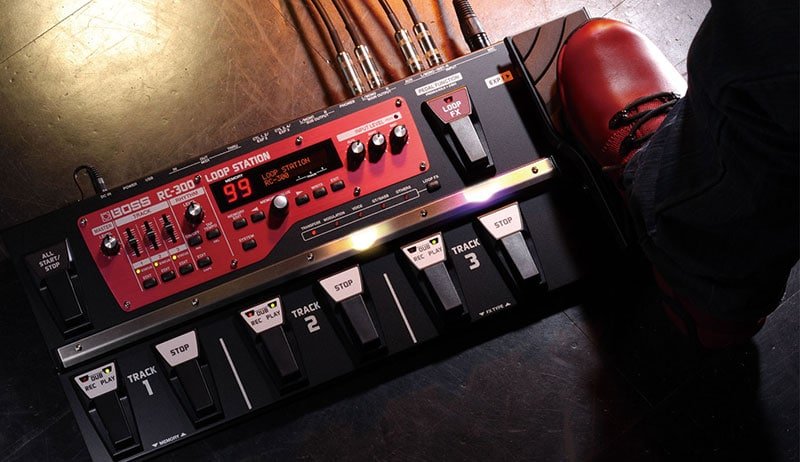
Timing is critical for effective looping, especially if you’re playing with other musicians or even just setting the tempo for your performance. When starting out, many loopers have difficulty with getting their loops precisely in time. That’s ok, it just needs practice to master.
Tapping your foot in time along with your playing will help you nail the timing, just when you need to press the loop footswitch. If you’re playing with a drummer or a sampled beat, be sure that you can really hear the timing so that you’re not “off” and muddle up the rest of the performance.
Relax
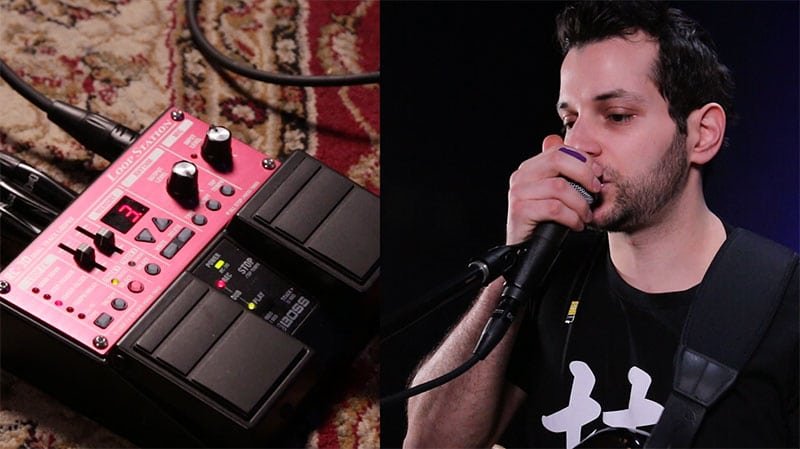
Another common reason for loopers having difficulty getting their timing right is because they feel uptight. If your loops just aren’t working out, then stop, take a deep breath, then just relax and let the music flow.
Chart your course
Improvising with loopers is of course, really, really fun. But if you’re performing live, having a good structure in mind can be really, really useful. You’ll keep the audience engaged, won’t have to ponder too much about what effect to use or what part to play and you can deliver a tighter, more defined performance.
UNDO is your friend
Learning how to UNDO/REDO is one of the most important parts of advanced looping, especially if you’re looping live often. The last thing you want is for an obvious mistake to repeat infinitely, especially at loud volumes where it’s really noticeable!
UNDO/REDO features are obviously handy for removing mistakes, however they’re also great for “dropping out” and “bringing in” certain sounds, without the need to use a second track.
UNDO is NOT always your friend
Ok, this might negate the last tip, but both of these suggestions can work for you if you want to try them out. If you muddle up a loop performance (and at times, just like everyone, you will), going for the UNDO function might not always be necessary.
Even a “muddled” take is salvageable and able to be transformed into something new. If your looper allows, try adding some effects or overdubbing a new part to see what happens. Who knows, it might even help you write a new song!
Maximize your rig for advanced looping
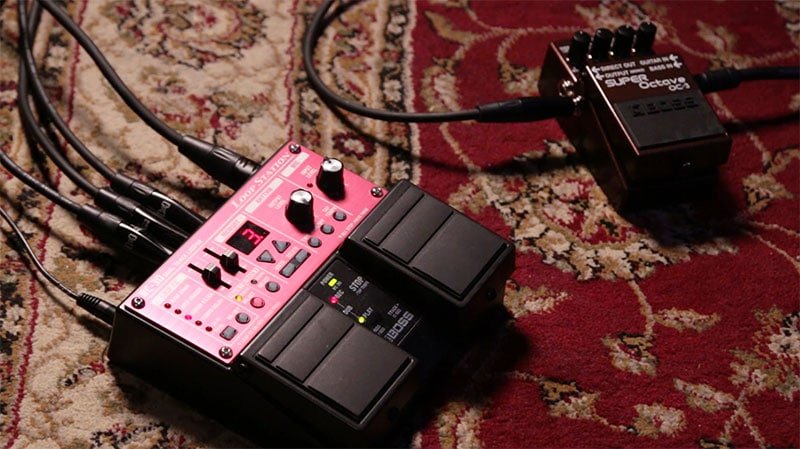
Loopers generally work best at the end of your signal chain. This is because if you’re using effects pedals, you’ve got the benefit of creating sounds or song parts printed with those effects before they enter the looper and start repeating.
So for example, you can layer a nice chord progression with phaser, chorus, reverb and delay. Over the top of that you can bring in an overdriven lead line with a flanger. Then you could add a different reverb and over the top of that, with a wacky, spacey filter sweep from your wah with a wild echo! That’s three different parts with three different tones, all created by you and your effects!
The opposite can also work! Try putting the looper in different places on your chain and running loops through your effects to create new sounds is something worth investigating.
Get cinematic
Of course, with the option to infinitely overdub, who knows where your effect experimenting can take you. Loopers are about layering and capturing bits and pieces of different recordings. So it’s not always necessary to stay in perfect time or follow the conventional verse/chorus song structure.
Loopers excel at soundscapes, so creating sounds or textures with your pedals and effects, then layering them with more elements is perfect for looping.
Ambient or non-rhythmic music doesn’t have to adhere to a specific time signature or tempo, so you’ve really got a blank canvas to explore with your effects and looper if you want to!
With advanced looping, keep an eye on the fire escape
This hearkens back to playing mistakes. As we said, you’re going to flub a loop at some point. It’s unavoidable but hey, it happens. So, if you know you’ve made something unusable make sure you have an out! For example, dropping into another recorded loop, putting a volume pedal after the looper pedal or muting the error loop can all act as a quick fix until you can sort out what’s going on.
Obviously, not an ideal fix but if you’re working it out on the fly, it’s better than stopping the looper and starting again.
Having a Plan B in mind is (always) a good idea. If you’re using a loop for a specific song part, it’s a good idea to practice making mistakes (just in case!). It’ll help relieve the pressure of having to nail that part of the song everytime.
As you can see, there are all kinds of ways to use your looper, as well as expanding your creativity and skills. With a bit of time and practice, looping will become a breeze to you and will take your performances to amazing places.
Staying in the loop, (so to speak), with new ideas and new gear will also keep you motivated and provide you with new ways to take control of your looper. Happy looping!
Related Articles
THE ULTIMATE GUIDE TO BOSS LOOP STATIONS
TAKING CONTROL OF YOUR LOOP STATION
DO YOU WANT KILLER BACKING TRACKS FOR YOUR LOOPER?
BOSS TALK: THE DEFINITIVE BEGINNER’S GUIDE TO LOOPING


